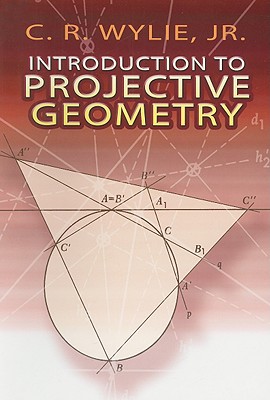You are here
Back to topIntroduction to Projective Geometry (Dover Books on Mathematics) (Paperback)
$29.95
Usually Ships in 1-5 Days
(This book cannot be returned.)
(This book cannot be returned.)
Description
This introductory volume offers strong reinforcement for its teachings, with detailed examples and numerous theorems, proofs, and exercises, plus complete answers to all odd-numbered end-of-chapter problems. 1970 edition.
About the Author
C. R. Wylie was an instructor at the University of Utah.A Dover OriginalClarence Raymond Wylie, Jr., had a long career as a writer of mathematics and engineering textbooks. His Advanced Engineering Mathematics was the standard text in that field starting in the 1950s and for many decades thereafter. He also wrote widely used textbooks on geometry directed at students preparing to become secondary school teachers, which also serve as very useful reviews for college undergraduates even today. Dover reprinted two of these books in recent years, Introduction to Projective Geometry in 2008 and Foundations of Geometry in 2009. The author is important to our program for another reason, as well. In 1957, when Dover was publishing very few original books of any kind, we published Wylie's original manuscript 101 Puzzles in Thought and Logic. The book is still going strong after 55 years, and the gap between its first appearance in 1957 and Introduction to Projective Geometry in 2008 may be the longest period of time between the publication of two books by the same author in the history of the Dover mathematics program. Wylie's 1957 book launched the Dover category of intriguing logic puzzles, which has seen the appearance of many books by some of the most popular authors in the field including Martin Gardner and, more recently, Raymond Smullyan. Here's a quick one from 101 Puzzles in Thought and Logic: If it takes twice as long for a passenger train to pass a freight train after it first overtakes it as it takes the two trains to pass when going in opposite directions, how many times faster than the freight train is the passenger train? Answer: The passenger train is three times as fast as the freight train.
